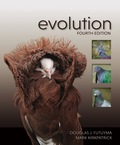
Concept explainers
To determine: The evolutionary factors that should be considered in debating whether or not the biological species concept can be applied to bacteria.
Introduction: Biological species concept (BSC) is a widely accepted concept for species. It defines the concept of species as a group of species whose members are capable of interbreeding but isolated from others on the basis of their reproductive abilities.
Explanation of Solution
Biological species link species to the evolution process as the interbreeding species share a common gene pool. The DNA recombination takes place instead of gene exchange between different species. This recombination results in the evolution of species. This concept helps to maintain the species uniformity, and it is applicable for large, complex creatures consisting of gametes.
In the single-celled organisms, such as bacteria, reproduction occurs mainly by asexual means. In bacteria, horizontal gene transfer takes place (transfer of genome from one bacterium to another). Since in this process, the only transfer of genetic material occurs, so it does not explain the evolutionary process, and therefore such species cannot be grouped together. The asexual reproduction bypasses the standard evolutionary process explained in the concept. Hence, the biological species concept (BSC) is not applicable to bacteria.
Want to see more full solutions like this?
Chapter 9 Solutions
Evolution
- Describe the impact of lateral gene transfer on bacterial genome evolution.arrow_forwardHow can the small size and haploid genome of Bacteria andArchaea accelerate their evolution?arrow_forwardA research microbiologist looking at evolutionary relatedness between two bacterial species is more likely to use Bergey’s Manual of Determinative Bacteriology than Bergey’s Manual of Systematic Bacteriology. True or false?arrow_forward
- A sample of bacteria is collected from soil in a field that was recently treated with pesticides. The bacteria are classified and a phylogenetic is built to illustrate the soil bacteria diversity. What kinds of characteristics would be best for creating this phylogenetic? a. rRNA gene sequence and amino acid sequence of lipase b. Cell wall structure and physical appearance c. Reproductive rate and susceptibility to pesticides d. Entire genome sequence and protein expression dataarrow_forwardHow might the evolution of antibiotic resistance in pathogenic bacteria be slowed down or prevented? What might you need to know in order to achieve this aim?arrow_forwardIn hospitals where many tuberculosis patients are treated the population of the tuberculosis mycobacteria may be constituted of multiresistant (to antibiotics) strains. How does the synthetic theory of evolution explain this fact?arrow_forward
- Which of the processes named here is the LEAST likely to contribute to the evolution of genetic diversity of bacteria and archaea? Group of answer choices Horizontal gene transfer Sexual reproduction Asexual reproduction Mutationarrow_forwardBacteria that live in the digestive systems of cows help break down the plants that cows eat, providing nutrients to cows. The digestive systems of cows offer a safe environment in which the bacteria can live and reproduce. Which type of realationship exist between the bacteria and the cows?arrow_forwardWhat are the key factors influencing the genomic diversity and evolution of bacterial populations?arrow_forward
- Bacteria evolve rapidly due to horizontal transfer ofgenes, including packets of genes called ____________islands, between bacterial species.arrow_forwardRickettsia bacteria always lives as parasites inside eukaryotic cells, ad their genomes are much smaller then those of free living bacteria. Organisms that live only as parasites often have reduced genomes compared to the free living relatives. How could a parasitic lyfestyle contribute to a reduction in genome size?arrow_forwardYou are discussing the choice of the “oil-eating” bacteria that you will use to clean the affected area from the oil spill and your team wants to know whether the Kalba sea constitutes a natural habitat for these bacteria. Formulate a hypothesis stating why or why not the Kalba sea area can be considered a natural habitat for such bacteria. Support your answer by discussing the role of evolution in contributing to the survival and thriving of “oil-eating” bacteria. Explain how and why these bacteria acquired these characteristicsarrow_forward
 Human Anatomy & Physiology (11th Edition)BiologyISBN:9780134580999Author:Elaine N. Marieb, Katja N. HoehnPublisher:PEARSON
Human Anatomy & Physiology (11th Edition)BiologyISBN:9780134580999Author:Elaine N. Marieb, Katja N. HoehnPublisher:PEARSON Biology 2eBiologyISBN:9781947172517Author:Matthew Douglas, Jung Choi, Mary Ann ClarkPublisher:OpenStax
Biology 2eBiologyISBN:9781947172517Author:Matthew Douglas, Jung Choi, Mary Ann ClarkPublisher:OpenStax Anatomy & PhysiologyBiologyISBN:9781259398629Author:McKinley, Michael P., O'loughlin, Valerie Dean, Bidle, Theresa StouterPublisher:Mcgraw Hill Education,
Anatomy & PhysiologyBiologyISBN:9781259398629Author:McKinley, Michael P., O'loughlin, Valerie Dean, Bidle, Theresa StouterPublisher:Mcgraw Hill Education, Molecular Biology of the Cell (Sixth Edition)BiologyISBN:9780815344322Author:Bruce Alberts, Alexander D. Johnson, Julian Lewis, David Morgan, Martin Raff, Keith Roberts, Peter WalterPublisher:W. W. Norton & Company
Molecular Biology of the Cell (Sixth Edition)BiologyISBN:9780815344322Author:Bruce Alberts, Alexander D. Johnson, Julian Lewis, David Morgan, Martin Raff, Keith Roberts, Peter WalterPublisher:W. W. Norton & Company Laboratory Manual For Human Anatomy & PhysiologyBiologyISBN:9781260159363Author:Martin, Terry R., Prentice-craver, CynthiaPublisher:McGraw-Hill Publishing Co.
Laboratory Manual For Human Anatomy & PhysiologyBiologyISBN:9781260159363Author:Martin, Terry R., Prentice-craver, CynthiaPublisher:McGraw-Hill Publishing Co. Inquiry Into Life (16th Edition)BiologyISBN:9781260231700Author:Sylvia S. Mader, Michael WindelspechtPublisher:McGraw Hill Education
Inquiry Into Life (16th Edition)BiologyISBN:9781260231700Author:Sylvia S. Mader, Michael WindelspechtPublisher:McGraw Hill Education





